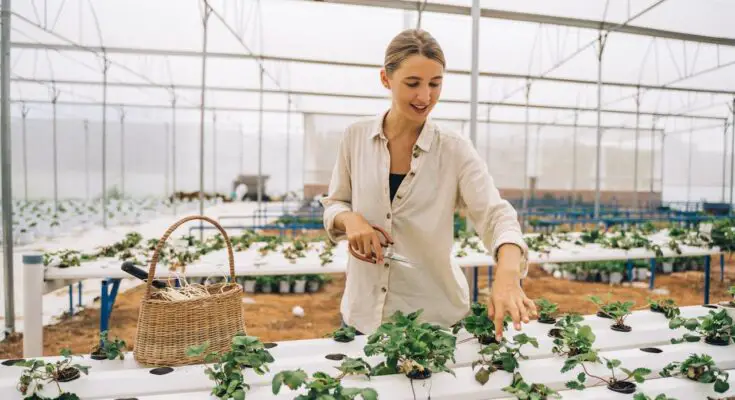Although using disorganized tools can make gardening a tedious hobby, it can also be a gratifying and calming pastime. Maintaining your gardening tools organized and easily available not only saves time but also increases their longevity. Effective organization can transform your gardening space, increasing the productivity and enjoyment of your labor. Regardless of your level of experience, these six pointers will support you in keeping your garden tidy.
Establish a Specialized Storage Area
To be organized and productive, you must designate a specific area for storing your gardening supplies. Pick a space, such as a gardening shed, a section of your basement, or a corner of your garage. Provide bins for tiny goods like gloves and seeds, shelves for pots and fertilizer, and hooks for hanging equipment to organize the area. To avoid rust and harm to metal tools, make sure the location is dry. It is easier to locate what you need when the lighting is good. Organizing your gardening supplies in one spot will help you save time and prevent getting frustrated looking for misplaced goods.
Effectively Use Wall Space
To hang and arrange tools like rakes, shovels, and hoses, use pegboards. Bigger tools can be kept easily accessible and off the ground by using wall-mounted racks. Smaller tools and garden accessories can be hung on hooks to make them accessible and visible. Every item is guaranteed to be put back in its correct location if the hooks are labeled or the tool outlines are drawn on the pegboard. This helps to keep your gardening area organized and productive by saving floor space and making it simpler to locate the items you need fast.
Invest in Solutions for Storage
Hand tools like trowels, pruners, and small spades can be kept portable and neatly arranged using toolboxes. Smaller items, such as gloves, seeds, and plant markers, are best stored in clear plastic containers so you can see what’s inside without opening it. You may cut down on the number of journeys you take to and from your primary storage place by using portable caddies or buckets to carry necessary tools throughout the garden. For storing larger things like pots and sacks of soil, think about using shelf units or stackable bins. These solutions not only shield your equipment from harm and keep it organized, but they also help speed up gardening chores.
Put a Labeling System in Place
Mark shelves, boxes, and containers with waterproof labels to make sure they survive handling and exposure to the elements. Sections with clear labels make it simple to determine where each tool or item belongs, which cuts down on the amount of time spent looking for supplies. Using color-coded labels, which designate distinct categories such as hand tools, fertilizers, or seeds, can further simplify the procedure. You can effortlessly handle your inventory and prevent losing important tools and supplies if you keep everything properly labeled.
Keep Tools You Use Often Close at Hand
When doing gardening chores, having often used tools close at hand can save time and effort. Keep necessary tools in a carry-along bucket or caddy that you may use to move around the garden. Think about putting a small shed or storage box next to your garden area for easy access. Maintaining tiny tools and accessories close at hand while working can also be made easier by wearing a garden apron with several pockets. Commonly used things can be kept in wall-mounted racks or hooks at the garden entry, saving journeys to the main storage room. You may increase the effectiveness of your gardening regimen by keeping this equipment close at hand.
Maintain an Inventory
Maintaining and organizing your gardening tools on a regular basis guarantee that they stay in good shape and are always prepared for use. Keep your tools clean on a regular basis to keep them free of dirt and rust and sharpen the blades to keep them functioning properly. Lubricate hinges and other moving components to guarantee smooth operation. To maintain your collection safe and operational, periodically check the tools for wear or damage and replace or repair them as needed. Maintaining a tool inventory makes it easier to keep track of what you own and spot any broken or missing parts that require repair.
Conclusion
Use wall space, designate a specific area for storage, and make the appropriate storage purchases by putting these suggestions into practice. Make sure everything is correctly labeled, and keep your regularly used instruments close to your hand. Maintaining your instruments will keep them in excellent condition. These easy methods will help you become less frustrated and save time. If everything is set up properly, you can concentrate on what you love most—tending to your garden. Savor a more efficient and fruitful gardening practice.



